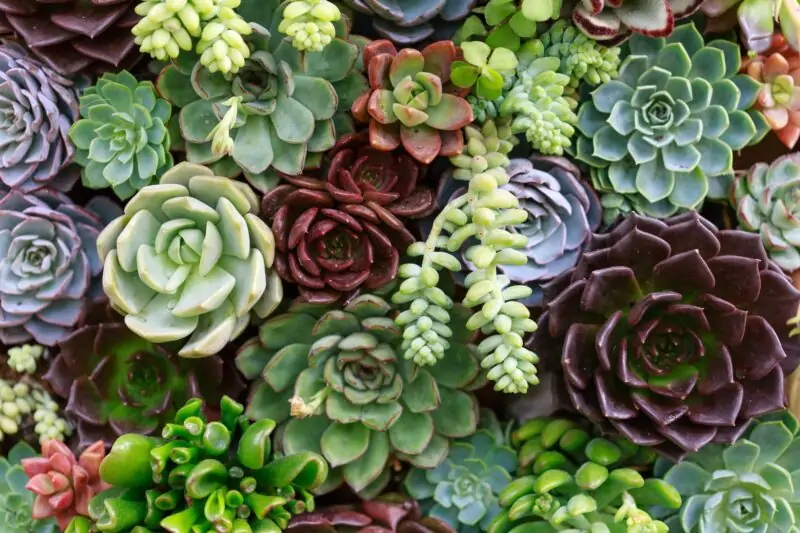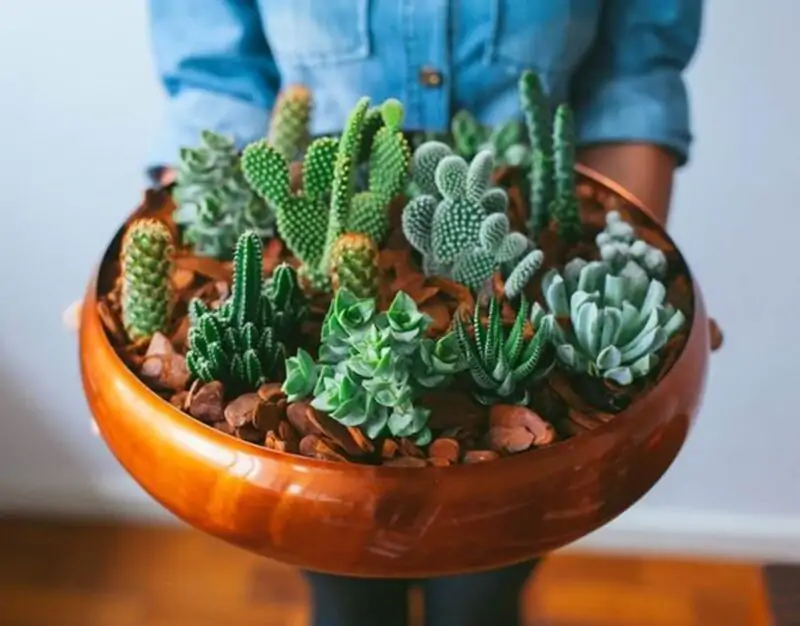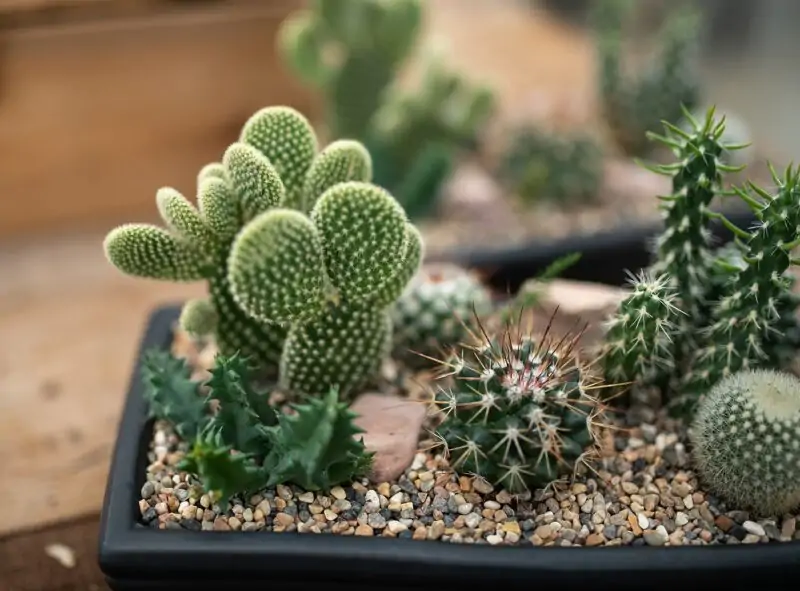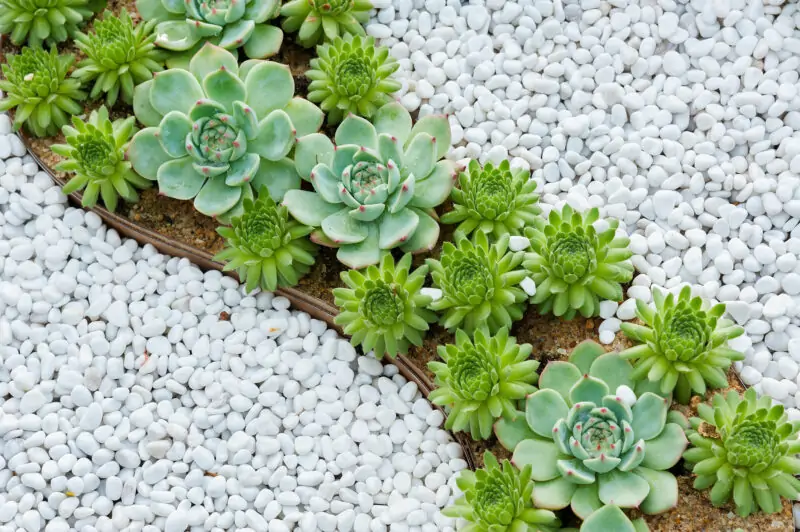Exploring the Fascinating World of Succulent Plants (Including Cactus)

What are succulent plants, you might ask? They’re an intriguing group of plants that are gaining popularity in homes and gardens worldwide. Coming in a variety of shapes, sizes, and colors, all succulents share one thing in common: their remarkable ability to store water. In this article, we’ll delve into the fascinating world of succulent plants. We’ll discuss what makes these water-storing wonders unique and how to care for them properly.
Understanding Succulent Plants
Succulents are a category of plants that store water within their leaves or stems. This remarkable trait enables these plants to thrive in dry areas where little water is available. They have adapted to go long periods without watering due to their inherent moisture storage ability.
Over time, these resilient plants have evolved to suit their harsh environments. Many succulents grow naturally in arid regions where rainfall is a rare occurrence. These plants, which are often considered succulents, have developed into efficient water storage systems. They possess specialized structures, such as thick, fleshy leaves or stems specifically designed for retaining vast amounts of moisture.
People often mix up various succulent species, such as cacti, aloes, and echeverias. All cactus species indeed belong to one family, known as Cactaceae. However, not every plant with thick leaves or stems falls into this category! A plant may be classed as a “succulent” if it exhibits water storage traits, but it doesn’t automatically make it a cactus. It’s part of the succulent charm – their diversity spans across 60 plant families and includes types of plants like the zebra plant and jade plants.
The Unique Charm Of Cacti And Succulents

A cactus, with its signature spiny appearance, is arguably more recognizable than most other succulent species. Each member of the succulent family, including cacti, has unique features that make it special. Though they might seem like tough defenders against predators, they are also resilient plants that flourish gracefully under warm temperatures.
The beauty of succulents doesn’t just stem from their differences, but also their adaptability. Succulents tend to have thick layers between pointed leaves, while others boast delicate filigrees perched atop tiny bristles. These rise tall on skinny stems, demonstrating the sheer variety of shapes and forms within this plant species.
The Science of Succulents
Defining a Succulent Plant
Succulent plants can vary in appearance. They range from tiny to several feet tall. These plants have thick fleshy leaves or stems. These are designed to store large amounts of moisture. Over 60 families include different types of succulents, with varying features and characteristics.
One common trait is their ability to retain water. They can do this either on the surface of their leaves or within their stem tissue. This trait makes this plant family unique among others found globally!
Differentiating Between Cactus And Other Succulents

When people think about succulent plants, they often confuse cacti with other kinds. This confusion is due to physical similarities between them. Cacti stand out differently than most because each member has spines around its edges for defense against predators. Meanwhile, members not belonging to the Cactaceae family appear far less aggressive. That’s because they don’t contain any sharp points!
So while all cactus belong to the family “Cactaceae,” it’s important to note that not every kind classified as “succulent” belongs there too! Some varieties fit more into other groups. For example, Agave falls into Agavaceae. Snakeplant (Sansevieria) is more like an herbaceous perennial compared to flowering variants!
Some cacti, like Gymnocalycium Friedrichii, exhibit stunningly vibrant and eye-catching flowers. This particular species boasts magnificent blooms in various shades of pink, purple, and white, which contrast strikingly against its green or bluish-green stems. The intricate patterns and delicate petals of Gymnocalycium Friedrichii’s flowers add a touch of elegance and charm to any cactus collection, making it a sought-after choice among plant enthusiasts.
The Genus Classification Of Succulent Plants
The classification system may seem confusing. But organizing all known species helps us understand our planet better. The system breaks down what’s available along certain lines. These include botanical similarities from genetic material rather than just visual cues alone.
Within this categorization process, you’ll find many differences. Even within individual families themselves, some key distinctions exist. These are based on whether we’re discussing small delicate rosette-forming beauties like Echeveria. Or we could be talking about larger tree-like proportions seen in plants like the Aloe vera or Agave species. Both are significantly larger and possess a different structural form.
Succulent Adaptations
Succulent plants are true survivors, having adapted to some of the harshest environments on Earth. Their ability to store water allows them to thrive in regions with low rainfall. These include deserts, coasts, and high-altitude mountains.
Succulents have developed various strategies to deal with harsh conditions. For example, their thick, waxy leaves help reduce water loss. Some even have tiny hairs on their surface to reflect sunlight like The Old Man Cactus (Cephalocereus senilis). This adaptation helps to protect the plant from intense heat and sunburn.
Caring For Your Succulents
Succulent species are generally easy to care for, making them popular choices for indoor gardening. Their ability to propagate from a simple cutting is quite remarkable, allowing any grower to cultivate new plants with ease. They require minimal attention compared to other houseplants, yet they need the right conditions to flourish. Here are some essential tips for succulent care:
Light
Succulent species adore light! They thrive in bright, indirect sunlight. However, they can also tolerate direct sunlight for a few hours each day.
Water
Remember, these little water-storing wonders keep water in their leaves and stems. This means they do not need frequent watering. Overwatering can lead to root rot, a common issue in succulent care. It’s best to water your succulents only when the soil is completely dry.

Soil
A well-draining soil is essential for these resilient plants. They prefer a mix that mimics the sandy, gritty conditions of their natural habitat.
Temperature
Most succulent species prefer warmer temperatures, but they can also tolerate mild frosts.
Fertilizer
While not necessary, you can feed your succulents with a diluted fertilizer during their active growth season. This usually happens in spring and summer, allowing the grower to enjoy a lush, vibrant display.
Outdoor Succulents: Cultivation and Care
Succulent plants are very adaptable! They can thrive in a variety of outdoor environments. These plants love dry, warm climates. They also favor well-drained soils. This allows their roots to access the minerals needed for optimal growth. If you’re considering an outdoor plant display, check out these succulent garden ideas to inspire your green thumb and add a unique touch to your outdoor space.

When planting succulents outside, positioning is key. Too much exposure to harsh sunlight can harm them. It can lead to scorching over time. On the other hand, not enough light can cause stunted growth. Thus, finding the right balance of light and shade is crucial in maintaining a healthy succulent garden.
Propagation
Growing cacti from seeds is an intriguing and rewarding process that allows plant enthusiasts to witness the entire lifecycle of these unique desert plants. Starting from tiny seeds, the journey begins by creating an environment that mimics their natural habitat, typically requiring well-draining soil mixed with sand or perlite. The seeds are sown on the surface of the soil and lightly covered, ensuring they receive sufficient light to germinate. Maintaining consistent moisture levels without overwatering is crucial, as cacti are susceptible to rot. With patience and careful attention to temperature and humidity, the seeds sprout, forming delicate seedlings that gradually develop into mature cacti with their characteristic spines and unique shapes. Watching these resilient plants thrive and grow from tiny seeds is a remarkable experience that highlights the wonders of nature and the power of nurturing life.
Pests and Diseases
Succulents, despite their hardy nature and ability to thrive in harsh conditions, are not immune to pests and diseases. Some of the most common pests include aphids, mealybugs, spider mites, and scale insects. These pests feed on the sap of the succulents, which can lead to discolored leaves, stunted growth, and in severe cases, death of the plant. Regular inspection of your succulents and early intervention can help keep these pests at bay.
In addition to these pests, succulents can also be affected by diseases such as powdery mildew. This is a fungal disease that presents as a white, powdery substance on the leaves or stems of the plant. It’s most commonly caused by high humidity and poor air circulation around the plant. Powdery mildew, if left untreated, can severely affect the health and appearance of your succulents. Early identification and appropriate treatment can help manage this disease and maintain the health of your succulent garden.
The Role Of Succulents In The Environment
Succulents In Ecosystems And Biodiversity
Many succulent varieties grow naturally in arid regions worldwide. Despite this, they play an important role in maintaining the balance of ecosystems. These hardy plants can withstand extreme conditions. They provide cover and food sources for wildlife living nearby.
Succulents can retain large quantities of moisture within their stems and leaves. This ensures a regular supply during drought seasons. It reduces the impact on local flora and fauna, who depend on these resources for long-term survival.
Importance Of Cacti In Their Native Habitats
Cacti are native to North America’s deserts. These resilient plants stand strong against high temperatures. They do this despite receiving little rainfall throughout the year. This makes them a great natural resource. They have evolved specialized adaptations to survive successfully without human intervention. This helps maintain biodiversity levels and keeps the ecosystem healthy.
FAQs
Succulent plants have gained popularity in recent years. Their unique beauty and ease of care contribute to this. However, this popularity has led to many questions and misconceptions about these fascinating plants. Here are some common ones:
Common Questions About Succulent Plants
A succulent plant is one that has adapted to arid environments. It does this by storing water in its leaves or stems.
Yes! Cacti belong to the family Cactaceae. This family is part of the larger group known as succulents.
One easy way to tell if your plant needs watering is by touching the soil. If it’s dry an inch below the surface, it’s time to water! Overwatering can lead to root rot. Underwatering can cause the leaves to shrivel.
Most indoor-grown species cannot tolerate full sun exposure. They are accustomed to low light conditions indoors. So, acclimatize them gradually!
Addressing Misconceptions About Cacti And Succulents
Despite their popularity, many misconceptions surround cactus and other succulent plants:
- Myth: All cactus look like tall green pillars.
- Truth: There are hundreds, if not thousands, of different kinds. Some are small and round, with bright flowers. Others resemble bushes or sprawling vines creeping along rocks.
- Myth: You only need to water your cactus once every few weeks.
- Truth: The care each variety needs varies greatly. Some require frequent watering, while others can go weeks without it.
- Myth: Succulents thrive in direct sunlight.
- Truth: While many species of succulents do well in full sun, not all will. Some varieties prefer partial shade or even complete darkness!
Conclusion
In conclusion, succulent plants are a fascinating group of plants that have adapted to some of the harshest conditions on Earth. These hardy species, found in dry areas, are able to store water in their leaves or stems, enabling them to thrive with little moisture. They range from indoor plants like jade and aloe vera to outdoor stalwarts that stand up to high temperatures and low rainfall.
What are succulent plants if not a testament to nature’s adaptability and resilience? With their ease of care, unique beauty, and variety, they offer endless possibilities for cultivation. Whether you’re a seasoned gardener or a beginner, succulents provide an accessible and rewarding gardening experience. Grow them indoors or outdoors, in full sun or partial shade – there’s a succulent for every situation.